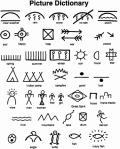The story of the “mummy’s curse” captivated the world following the discovery in 1922 of the tomb of Pharaoh Tutankhamun in Egypt. Lord Carnarvon, the British patron, died shortly after attending the tomb’s opening, sparking rumors that supernatural forces were to blame.
 |
|
The head of Pharaoh Tutankhamun before being scanned. |
In recent years, a scientific hypothesis regarding Carnarvon’s death has emerged. Could he have died due to exposure to toxic pathogens from the long-sealed tomb? Perhaps these pathogens overwhelmed his immune system, which had already been weakened by a chronic illness he suffered before coming to Egypt.
“When you think about Egyptian tombs, you realize they contain not just corpses, but also food—meat, vegetables, and fruits buried for the journey to the afterlife“, said Jennifer Wegner, an Egyptologist at the University of Pennsylvania Museum in Philadelphia. “These certainly attract insects, bacteria, mold, and similar organisms. Such raw materials have been sitting there for thousands of years.”
Recent laboratory studies have revealed that some ancient mummies indeed harbor mold, containing at least two potentially dangerous species—Aspergillus niger and Aspergillus flavus. These molds can cause allergic reactions ranging from congestion to pulmonary hemorrhage. They are particularly dangerous for individuals with weakened immune systems. Some tomb walls may be covered with bacteria that can damage the respiratory system, such as Pseudomonas and Staphylococcus.
Scientists have also found ammonia, formaldehyde, and hydrogen sulfide inside the sealed sarcophagus. At high concentrations, these can cause eye and nasal burns, produce pneumonia-like symptoms, and in severe cases, can be fatal.
Bats residing in many excavated tombs have carried fungi that can cause respiratory illnesses similar to influenza. Under suitable conditions, these agents could be lethal.
However, experts who investigated Carnarvon’s death believe the toxins in the tomb were not related to his demise. Lord Carnarvon had been chronically ill before entering the resting place of the pharaoh. Furthermore, he died several months after his initial exposure to the tomb. If he had been exposed to the biological agents there, they would have manifested their effects sooner.
“Considering the sanitary conditions at that time, especially in Egypt, Lord Carnarvon was likely safer in the tomb than outside“, stated Dr. F. DeWolfe Miller, a professor of epidemiology at the University of Hawaii in Manoa.
“We have never heard of a case of an archaeologist or tourist suffering any misfortune (from mold or bacteria in tombs)“, Miller said.
“In the archaeological projects I have participated in, we generally do not wear masks or protective gear,” she explained. “If we did, it was due to concerns about inhaling dust, not mold“. “If someone has a weak immune system, they might want to wear some protection in a tomb, but that could happen in a restaurant or anywhere else“.
On the other hand, while mold and bacteria are present in Egyptian tombs, it is still challenging to determine which are truly of ancient origin. Moreover, despite the presence of these harmful agents, most archaeological sites, including tombs, have proven to be safe for both scientists and tourists.
In fact, the real curse of the mummy may befall the tomb itself rather than modern-day tourists. “There are countless examples of tombs being contaminated by humans rather than tombs contaminating humans“, Miller explained. The eagerness to open tombs for discovery without considering preservation measures can lead to severe damage. Moisture has allowed mold to grow on walls, destroying paintings and other artifacts. Not to mention the damage caused by visitors.





















































